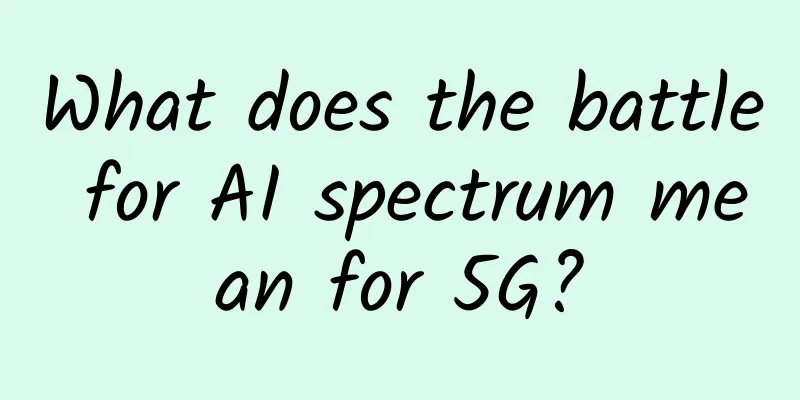Wu Hequan: 5G, as the first choice for new infrastructure, will face five major challenges

|
On April 28, Wu Hequan, an academician of the Chinese Academy of Engineering, pointed out that 5G, as the first choice of new infrastructure, has been entrusted with the important task of responding to the economic downward pressure brought about by the epidemic and providing a new engine for high-quality and sustainable economic development. 5G new infrastructure will bring five major challenges in terms of technology, operation and maintenance, products, market and security maturity. my country's 5G construction faces SA exploration risks At present, my country's 5G has been officially commercialized for less than half a year. The main highlight of 5G is broadband mobile access, and it has not yet been fully tested with large traffic, large connections, high reliability and low latency. This year, my country is the first country in the world to carry out large-scale construction of independent networking (SA), and will launch new functions such as SBA (service-based network architecture), virtualization, and network slicing, laying the foundation for applications for industrial Internet and Internet of Vehicles. Wu Hequan pointed out that large-scale networking technologies such as SDN, NFV, SRv6, network slicing, and SD-WAN have not yet been verified, and will face the risk of SA exploration. In terms of core network routing protocols, there is no breakthrough in 5G standards. IETF is now focusing on developing application standards for IPv6 in routing protocols, and ITU has proposed New IP, flexible and variable-length IP packets, diversified addressing, and super TCP. Wu Hequan said that these standards also need to be considered when building a large-scale 5G core network. At the same time, millimeter wave technology needs to be used in business-intensive areas. Wu Hequan said that my country's technological accumulation in the millimeter wave frequency band is a shortcoming and needs to be strengthened. The co-construction and sharing model needs to be explored Under the SA network system, there is a lack of experience in the application of SDN with complex routing across the entire network and VPN with multiple types of ultra-massive connections. Wu Hequan pointed out: "How network slicing is compatible with the existing network is a question that needs to be considered, and the mechanism to avoid conflicts among the combinations of various business units of SBA also needs to be studied." At present, although there are precedents of two operators jointly building networks abroad, the depth and scale of sharing cannot be compared with the joint construction of 5G networks by China Telecom and China Unicom. Wu Hequan said that the premise for China Telecom, China Unicom and China Broadcasting Corporation to jointly use the 3300-3400MHz frequency band for 5G indoor coverage nationwide is the need for unified interfaces and network management standards. At the same time, Wu Hequan pointed out that the reasonable MEC granularity is an issue that needs to be explored in practice. Applications such as mobile terminals, robots, and connected cars need to be carried out under the premise of MEC to ensure latency. Issues such as coordination between MECs and the reasonable allocation of functions between MEC and the central cloud need to be studied. In addition, how to open up MEC capabilities for vertical industries is also an issue that needs to be studied. It is difficult to reduce the power consumption of 5G base stations Low-power, low-cost 5G terminals are the bottleneck for large-scale commercial use. Wu Hequan said: "The industry hopes that domestic multi-mode, multi-screen chips that support SA will be mass-produced, but the 5G baseband chips on the market are mainly based on 7-nanometer technology. Foreign countries have begun to release the next generation of chips with higher process levels. The supply chain of my country's self-developed new generation of 5G terminal chips is at risk of being controlled by others, and the pressure for continuous chip innovation is very high." In addition, the maturity, reliability and compatibility of the new generation of operating systems and operating platforms for domestic mobile phones remain to be tested. After more than half a year of hard work, the power consumption of 5G base stations has been reduced by nearly half. Wu Hequan said that the power consumption of 5G base stations is still three times that of 4G, and it is very difficult to further reduce power consumption. Indoor coverage accounts for a high proportion of mobile network construction investment. 5G has a high operating frequency, poor electromagnetic wave penetration through walls, and higher coverage costs than 4G. Deep coverage requires a comparison of distributed base stations and indoor distributed systems. The new generation of indoor distributed systems needs to take into account both active and passive, expand the Internet of Things and positioning functions, and increase intelligent capabilities such as visual operation and maintenance. At the same time, 5G terminal test instruments and network optimization instruments are still weak links in the 5G industry chain. Users demand higher-value 5G experience Currently, the public's perception of 5G is that it has wider bandwidth and faster speed, which is not enough to quickly expand the user base. Users need a higher value experience. At present, industry applications are highly personalized and are related to the coordinated opening of upstream and downstream industries and the management and access of the industry. Wu Hequan said: "The rigid needs of the industry, cross-border cooperation and business models are not yet clear, and the enthusiasm of industry leaders has yet to be exerted. At present, some companies have proposed the requirement to build their own 5G enterprise private networks, but they need to consider the frequency planning and management of the private networks as well as interference coordination." In terms of 5G application management, the application of telemedicine, unmanned driving, robots, and industrial Internet involves industrial safety, personal safety, privacy protection, and ethics, which go beyond the content of existing legal norms. It is necessary to accelerate the improvement of the legal and regulatory system related to 5G applications. Existing industry terminals are based on 5G CPE, which makes it difficult to bring into play the true 5G application effect. We need 5G industry modules and chips with rich specifications and varieties to enhance the multi-scenario adaptability of the modules and reduce costs. Safety and reliability face challenges Wu Hequan said that in terms of security and reliability, the main challenges are virtualization, openness, slicing, large connections, open source, and big data. Virtualization blurs the physical boundaries of the network. The virtual security domain changes dynamically, and the traditional security mechanism that relies on physical boundary protection is difficult to work. Control systems are easily targeted by network security attacks, and the sharing of underlying network resources will challenge security isolation. The openness of 5G means that 5G uses universal Internet protocols instead of traditional mobile network-specific protocols, which expands business capabilities but makes it more vulnerable to external attacks. At the same time, an effective security isolation mechanism is needed between 5G slices to prevent a network slice with low protection capabilities from being attacked and becoming a springboard to affect other slices. The continuous onlineness of large connections can easily become a springboard for attacks such as DDoS, and the anti-intrusion capabilities of 5G are limited by low-power algorithms. Large connection authentication will trigger signaling storms and affect latency. The Internet of Vehicles also requires support for point-to-multipoint V2V fast authentication. In addition, many 5G software will be open source, and the software's excessive reliance on third-party open source basic libraries will also increase the risk of introducing security vulnerabilities. Training neural networks with distorted data can lead to incorrect decisions that are difficult to detect due to the unexplainable nature of AI results. Finally, Wu Hequan said: "Although 5G faces many challenges, opportunities also exist. 5G will give birth to new business forms. The initial investment pressure of 5G construction is high, and it is difficult to talk about the return on investment without the mobile communication network and users reaching a certain scale. As a new infrastructure, 5G not only needs the responsibility of operators, but also requires the joint efforts of all parties in the industry chain and the strong support of government policies." |
<<: 5G "new infrastructure", new scenarios, new models
>>: 5G independent networking commercialization will be realized within this year
Recommend
CUBECLOUD: Los Angeles/Hong Kong Lite series 30% off from 27 yuan/month, Pro series 15% off from 58 yuan/month
CUBECLOUD is a Chinese hosting company establishe...
The Impact of WiFi Chipsets on Internet Speed and Performance
In today's fast-paced digital world, a stable...
Huawei aims to lead its partners in a "collective transformation" from ecological cooperation to ecological synergy
[51CTO.com original article] On March 22, Huawei ...
[Black Friday] Friendhosting 40% off, 13 data center VPS monthly payment starts from 1.8 euros
Friendhosting released this year's Black Frid...
Research shows: 80% of enterprises will strengthen 5G and edge plans
Edge and 5G have become leading areas of investme...
I would like to say a few more words about this communication failure...
These days, everyone is paying attention to the ...
CN2 GIA limited package replenishment for BandwagonHost $46.6/year, optional DC6/DC9/Japan SoftBank, etc.
Bandwagonhost has restocked its limited edition a...
Let JWT protect your API services
Hello everyone, I am Dayao. I have written an art...
Let ChatGPT tell you how to build a lossless network that supports ChatGPT computing power
With the acceleration of digital transformation o...
Learn VLAN division from scratch to double your network performance!
When it comes to network security and performance...
Is 5G not the only option for the Internet of Things?
While the Internet of Things has the potential to...
TmhHost New Year's Day promotion: Japan Softbank/Los Angeles CN2 GIA (normal/high defense) quarterly payment starting from 79 yuan
TmhHost launched a New Year's Day promotion, ...
RAKsmart adds Japan cloud server with 30% discount, optional mainland optimization/premium network CN2+BGP, free snapshot backup
RAKsmart has launched its cloud server for about ...
EtherNetservers: $15/year-1.5GB/40GB/2TB/2IP/Los Angeles & Jacksonville Data Centers
EtherNetservers was founded in 2013 and has been ...
In the wave of digital transformation, how should enterprise IT architecture change according to needs?
The wave of digitalization is driving the world e...









